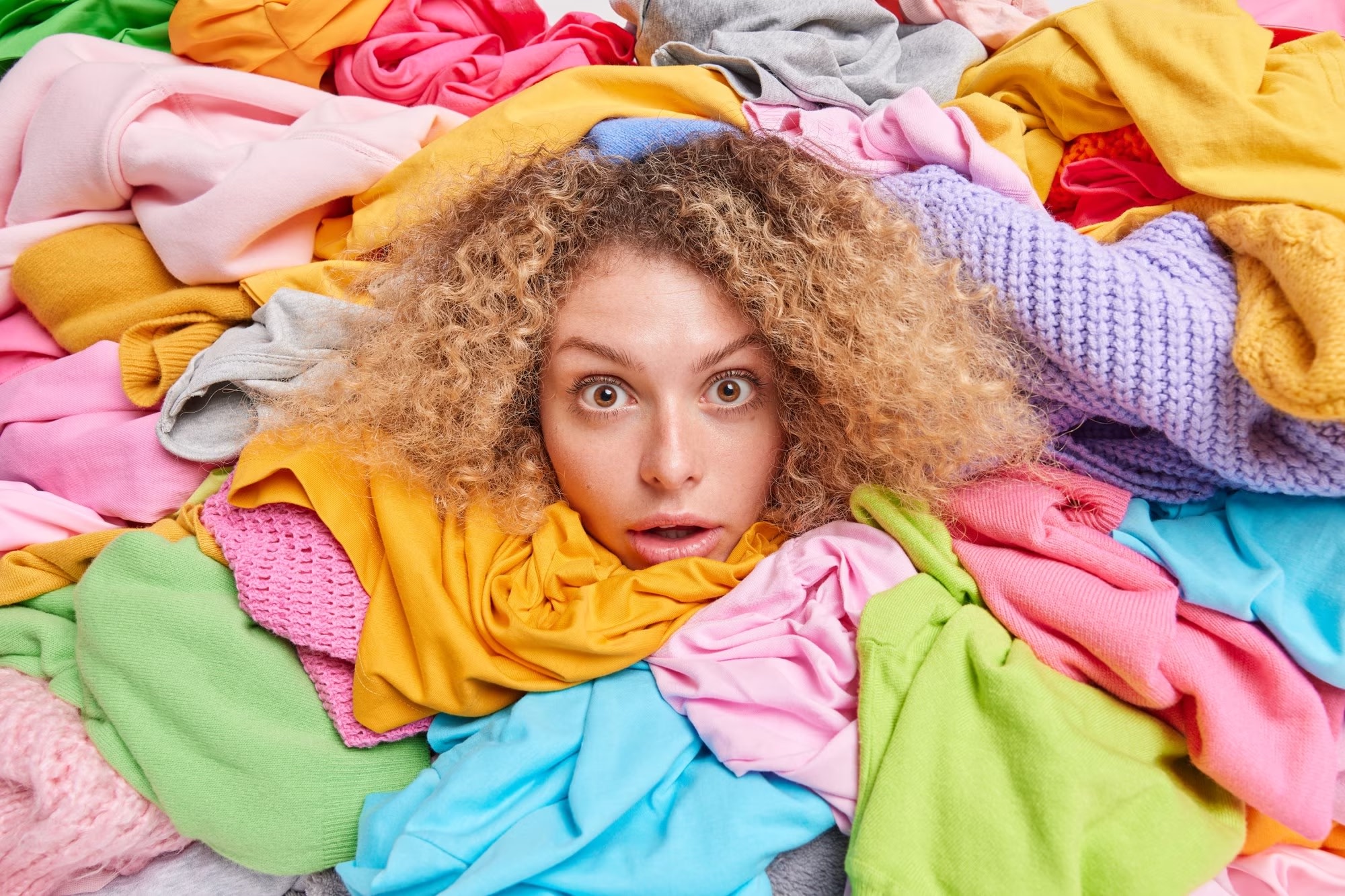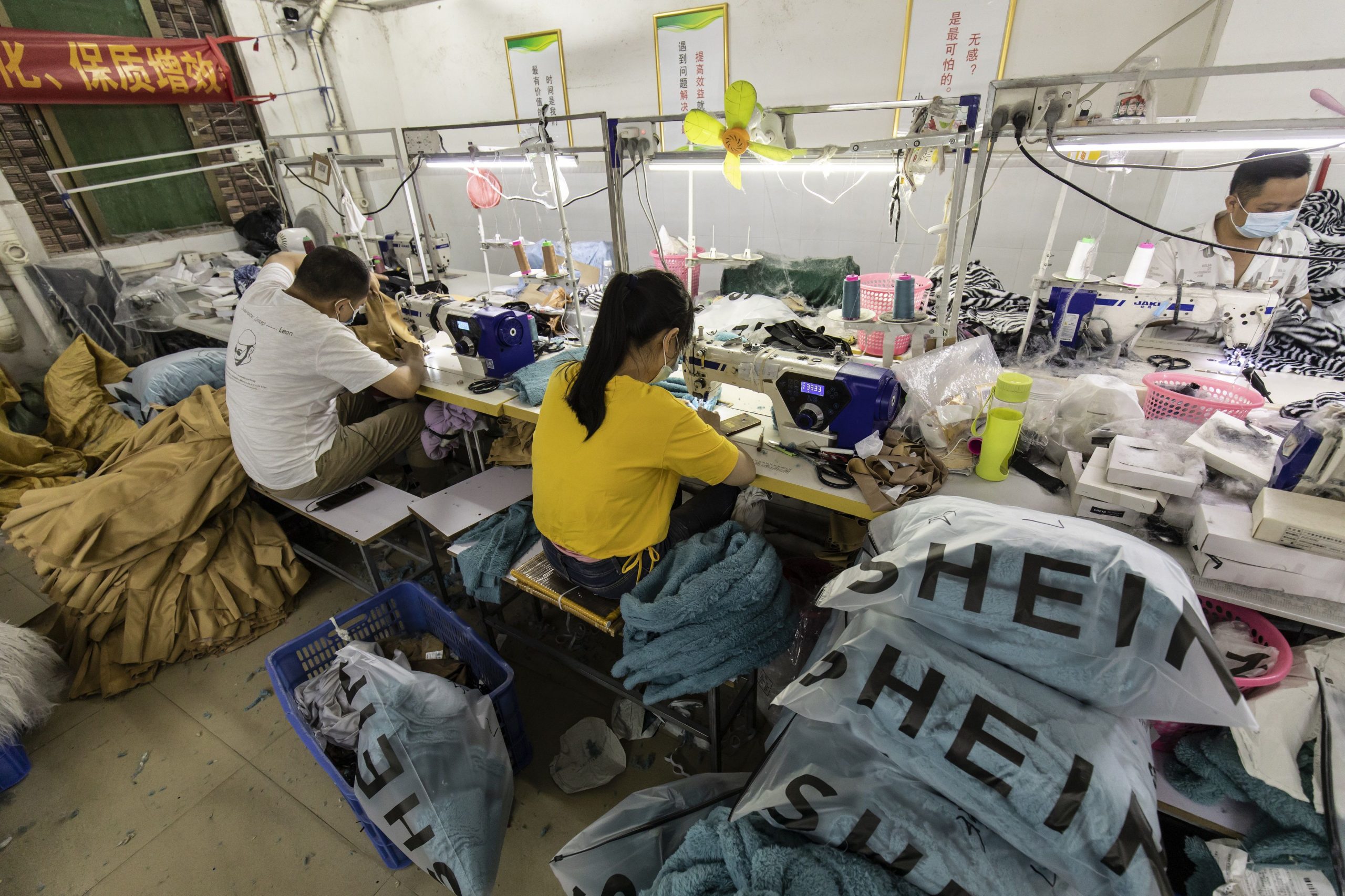Top 10 Examples of Circular Fashion
Shein

One of the most resource-demanding industries in the world is the fashion industry, and as it’s developed, it’s created more and more problems for our environment. It makes up about 10 percent of global carbon emissions, which exceeds both international flights and maritime shipping combined.
And with the creation of fast fashion, those numbers are bound to increase unless companies begin changing their ways dramatically. In some cases, we’ve seen some change, but not nearly enough to make that big of an impact. What can really tip the scales is when companies work to practice circular fashion instead.
Featured Article: How Fast Fashion Can Improve Industry-Specific ESG Initiatives
What’s Circular Fashion?
Circular Fashion is a sustainable system that leverages recycling, upcycling, and reducing waste in the fashion supply chain itself. There are many examples of larger fashion brands doing at least one of those three things, notably letting shoppers resell their purchased clothing.
But circular fashion is more than that, as it’s a closed-loop system where materials are being reused and regenerated. These initiatives are more robust than what some of the larger fashion brands are doing. Best of all, there are many initiatives out there working to make these systems work.
Featured Article: How Can Shein Clean Up Its Act?
Examples Of Circular Fashion
Renting and Clothing Subscriptions
Normally relegated to suits and wedding dresses, this system has expanded beyond those articles of clothing to everyday fashion. The idea is that people will be able to borrow clothes for a specific period of time and ultimately share the garments with other people.
This reduces the need for constant production from fashion brands, and as long as the clothing is returned, it can be passed around to other individuals until the fabric wears down.
Featured Article: 13 Sustainable Designers And Luxury Fashion Brands You Need To Know
Second-Hand and Vintage Markets
Thrift stores have been around for decades now, and these are usually great sources for second-hand clothing. Some of the exceptions are the larger franchised stores like Value Village, which are more about profits than saving the environment.
But smaller, locally-owned thrift stores are what you are looking for. Ultimately, the thrift stores in place enable the circulation of pre-owned clothing and extend its life cycle, preventing it from ending up in landfills.
Featured Article: How Sustainable Fashion Will Look In 2023
Remaking
No bit of fabric goes unused. That is the idea of remaking clothing. Any old or discarded materials are used to create new garments in various ways. You can think of it as patchwork clothing in that it recreates something new and reduces the waste of having loose material or fabric thrown out.
Featured Article: Top 5 Social Sustainability Examples You Need To Know
Closed-Loop Recycling
Like we’re finding out with recycling plastic, traditional recycling methods aren’t as effective as we think they are. There needs to be a change in how we recycle items, and in the case of fashion, one possible way is closed-loop recycling. The idea is to use recycling techniques to transform old textiles into something new. Similar to remaking, it’s basically taking full articles of clothing and making them into new clothing items.
Repair and Alteration
While this can be done through the purchase of sewing kits and learning how to sew, some companies can also consider creating and fleshing out their own repair centres for clothing. This can also branch into altering clothing, similar to tailoring suits that fit a person’s figure.
Regardless, these practices keep the same garments around for longer, extending their lifespan and also mitigating waste when clothing only has minor damages or needs a slight style adjustment made to it.
Featured Article: The Future of Sustainable Packaging: Embracing Eco-Friendly Solutions
Sustainable Material
Organic cotton, Tencel, recycled polyester, or fabrics made from fruits (or vegetables) are all viable strategies and examples of sustainable materials being used in fashion. A simple change from the standard materials companies use to something more sustainable and resource-demanding can make a significant difference. Innovations are taking us far, quickly, check out this overview on everything you need to know about mushroom leather.
Yes, mushroom leather.
Featured Article: Top 20 Sustainable Shoe Brands to Step Out Responsibly
Cradle-to-Cradle Certification
Along the same lines as sustainable materials, getting this certification proves that the products provided are fully recyclable or biodegradable. This adds more legitimacy to designer and brand claims, as it is the multi-attribute standard used globally by the fashion industry for decades.
Collaborative Initiatives
We’ve already started to see some of this with Shein X, though with more mixed results. However, that shouldn’t stop brands from working with designers and other brands to create more sustainable clothing. From fashion projects to supporting research and awareness campaigns, those can add up and create more buzz around circular fashion.
Extended Producer Responsibility
EPR, for short, means that customers can return products to the brands that made them once the product is nearing the end of its life. The company would then take the steps necessary to recycle, dispose of, or repurpose it through any of the methods mentioned thus far. Simply having a take-back program is a start and ensures that clothes don’t end up in landfills or in foreign countries. Here’s a great set of explainers from the Organisation for Economic Co-operation and Development (OECD).
Zero-Waste Fashion Design
Beyond the materials, the designs themselves can also be made zero-waste. Through the use of pattern techniques, these can reinforce quality without having to waste more fabric than is necessary to make the clothing. Being mindful of the material that’s being used can make a big difference in making collections sustainable. The ‘’quest to eliminate fabric waste” is real, find out more here.
Featured Article: ESG Voices: Circular Fashion - You Are What You Wear
Circular Fashion Can Happen
With so many of these examples, it’s clear that bigger fashion brands aren’t really doing enough to mitigate waste and be sustainable. Perhaps a positive place to start is to consider that the very core nature of the fashion industry is to be constantly changing. This innate adaptive energy places smaller and medium-sized brands well to go down a more sustainable route, showing quality in their clothing while also doing their best to reduce waste.
The hope, of course, is that soon enough, the much larger brands will begin to make much larger adjustments to their sustainability efforts so we can embrace cumulative, real change that sets a firm precedent for a fully circular fashion future in which we can all participate.
Bookmark our Featured Articles for regular ESG news and views from our global writing team.






